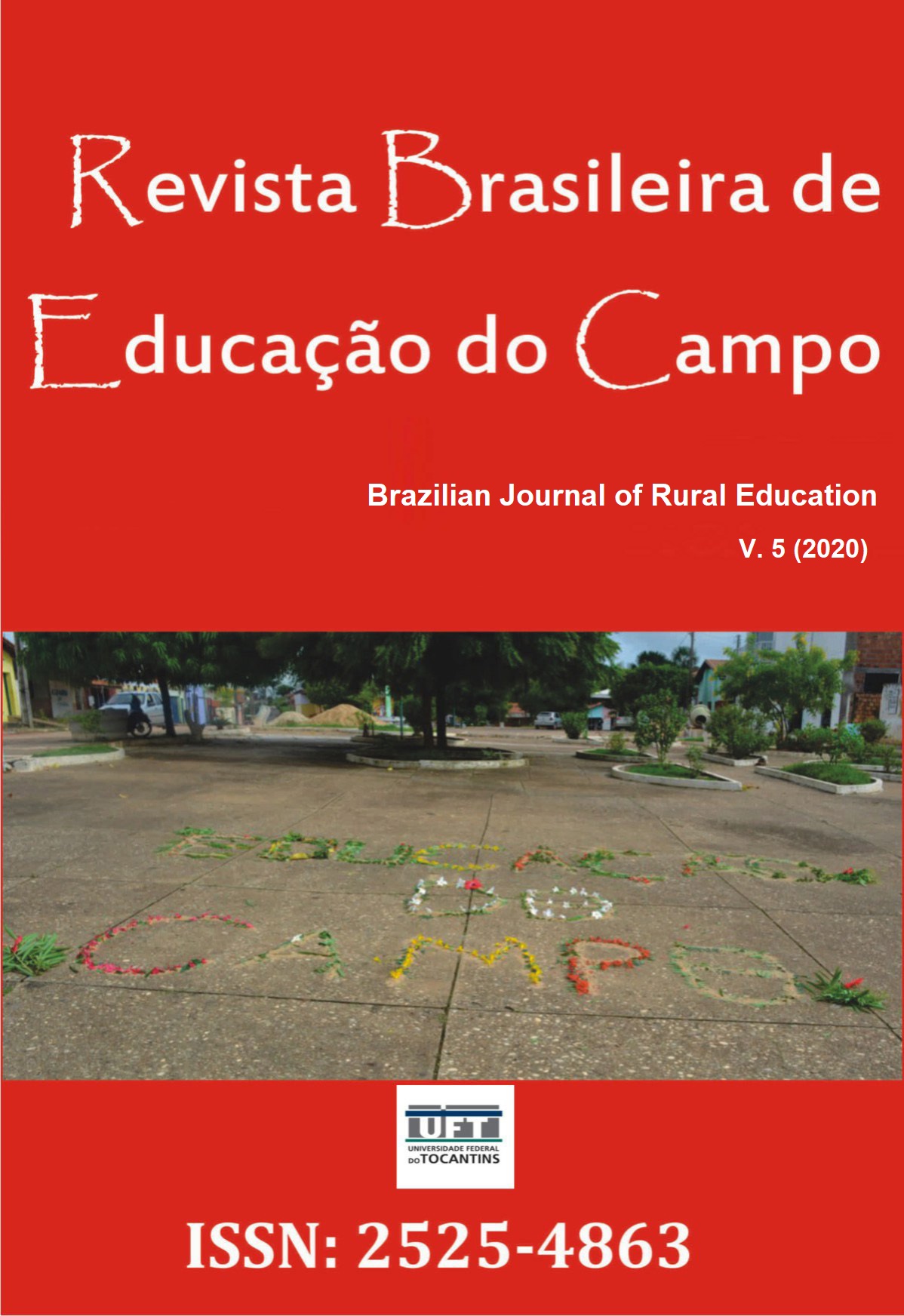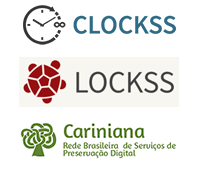Religious practices, COVID-19 and peasantry: a two-part analysis of the pandemic from an extension project
DOI :
https://doi.org/10.20873/uft.rbec.e10818Résumé
ABSTRACT. This paper analyzed the repercussions of the COVID-19 pandemic on religious practices of peasant subjects and rural communities in which students of the Degree in Rural Education of the Faculty of Education of the Universidade Federal de Minas Gerais (LECampo/FaE UFMG) work and residency. This is an extract from an investigation that is linked to the extension project “The people of the countryside and the COVID-19 pandemic”, created in April 2020. The methodological paths of the investigation consisted of the application of questionnaires with closed questions and open, answered by 36 students in the first stage (April/May 2020) and by 46 students in the second stage (July 2020). The data were analyzed by means of categorical content analysis. The results point to repercussions that relate to the following categories: a) socialization/sociability; b) interruption of activities in religious spaces; c) modes of remote participation in religious activities; d) hogar as a privileged place for remote religious practices; e) return from presential activities in collective religious spaces; f) relationship between pandemic, faith, punishment and divine protection.
Téléchargements
Références
Alves, J., Cavenaghi, S., & Barros, L. (2017). Distribuição espacial da transição religiosa no Brasil. Tempo Social, 215-242. https://doi.org/10.11606/0103-2070.ts.2017.112180
Amiri, A., & Akran, M. (2020). COVID-19: The challenges of the human life. Social Work & Social Sciences Rewiew, 17(1). https://www.researchgate.net/publication/341508945_COVID-19_THE_CHALLENGES_OF_THE_HUMAN_LIFE
Andrade, P., & Sales, R. (01 de junho de 2020). A presença pública das religiões em tempos de pandemia. Recuperado de: http://www.ufs.br/conteudo/65382-a-presenca-publica-das-religioes-em-tempos-de-pandemia
Andrade, R. B. (2007). Religiosidade e modos de vida: a (re)construção do lugar na comunidade rural de Tenda do Moreno em Uberlândia. Uberlândia: Universidade Federal de Uberlândia. Recuperado de: http://clyde.dr.ufu.br/bitstream/123456789/16272/1/RBAndradeDIS01PRT.pdf
Antunes-Rocha, M., & Carvalho, C. (2015). Caderno II: educação do campo: histórico, princípios, conceitos e práticas. Belo Horizonte: UFMG/FaE.
Bailly, N., Roussiau, N., & Fleury-Bahi, G. (2011). Étude des liens entre les croyances religieuses et spirituelles, la santé et l'âge. Bulletin de psychologie, 2011/2(512), 149-154. https://doi.org/10.3917/bupsy.512.0149
Bandeira, O., & Carranza, B. (05 de maio de 2020). Só o Brasil cristão salva do COVID-19? Boletim Ciências Sociais, 1-7. Recuperado de: http://anpocs.org/index.php/publicacoes-sp-2056165036/boletim-cientistas-sociais/2347-boletim-n-33-cientistas-sociais-e-o-coronavirus?idU=3
Bardin, L. (1977). Análise de conteúdo. Lisboa: Edições 70.
Centers for Disease Control and Prevention. (20 de agosto de 2020). Coronavirus Disease 2019 (COVID-19). Recupereado de: Centers for Disease Control and Prevention: https://www.cdc.gov/coronavirus/2019-ncov/need-extra-precautions/people-at-increased-risk.html?CDC_AA_refVal=https%3A%2F%2Fwww.cdc.gov%2Fcoronavirus%2F2019-ncov%2Fneed-extra-precautions%2Fpeople-at-higher-risk.html
Fleck, M., Borges, Z., Bolognesi, G., & Rocha, N. (2003). Desenvolvimento do WHOQOL, módulo espiritualidade, religiosidade e crenças pessoais. Revista de Saúde Pública, 37(4), 446-455. https://doi.org/10.1590/S0034-89102003000400009
Fundação Oswaldo Cruz. (20 de agosto de 2020). Nota do Comitê de Saúde da Pessoa Idosa de pesquisadores da Fiocruz. Recuperado de: Fiocruz: https://portal.fiocruz.br/sites/portal.fiocruz.br/files/documentos/covid19_e_saude_do_idoso_apoio_ao_isolamento_para_pessoas_de_todas_as_idades_fiocruz_2.pdf
Gil, A. (2008). Métodos e técnicas de pesquisa social (6ª ed.). São Paulo: Atlas.
Instituto Brasileiro de Geografia e Estatística. (15 de agosto de 2020). Censo, amostra religião. Recuperado de: Instituto Brasileiro de Geografia e Estatística: https://cidades.ibge.gov.br/brasil/pesquisa/23/22107
Leal, Á., Silva, A., Arcanjo, R., & Herzog, R. (2019). Entre saberes e fazeres do Campo, a identidade Geraizeira: a construção e o desenvolvimento de um projeto de trabalho interdisciplinar em escolas do Campo no Norte de Minas Gerais. Estudos Interdisciplinares em Educação, 1(6), 24-41. Recuperado de: http://unifatea.com.br/seer3/index.php/EIE/article/view/1240/1080
Marin, J., & Marin, J. (2009). Colonos italianos de Silveira Martins: entre os poderes da Igreja Católica e do Estado. In D. P. Neves (Org.). Processos de constituição e reprodução do campesinato no Brasil (pp. 65-88). Brasília: Editora Unesp.
Martinuci, O., Lima, V., Montanher, C., Felini, M., Rigoldi, K., Endlich, Â., . . . Ferreira, M. (2020). Dispersão da Covid-19 no Estado do Paraná. Hygeia - Revista Brasileira de Geografia Médica e da Saúde, 251-262. https://doi.org/10.14393/Hygeia0054619
Menezes-Neto, A. J. (2007). A Igreja Católica e os Movimentos Sociais do Campo: a Teologia da Libertação e o Movimento dos Trabalhadores Rurais sem Terra. Caderno CRH, 20(50), 331-341. http://dx.doi.org/10.1590/S0103-49792007000200010
Peres, J., Simão, M., & Nasello, A. (2007). Espiritualidade, religiosidade e psicoterapia. Archives of Clinical Psychiatry (São Paulo), 34(supp. 01), 136-145. http://dx.doi.org/10.1590/S0101-60832007000700017
Qian, M., & Jiang, J. (2020). COVID-19 and social distancing. Journal of Public Health (Berl.). https://doi.org/10.1007/s10389-020-01321-z
Röhr, F. (2011). Espiritualidade e Formação Humana. Poiésis, 53-68. https://doi.org/10.19177/prppge.v4e0201153-68
Sra, H., Sandhu, A., & Singh, M. (2020). Use of Face Masks in COVID-19. Indian Journal of Pediatry, 87, 553. https://doi.org/10.1007/s12098-020-03316-w
Téléchargements
Publié-e
Comment citer
Numéro
Rubrique
Licence
Proposal for Copyright Notice Creative Commons
1. Policy Proposal to Open Access Journals
Authors who publish with this journal agree to the following terms:
A. Authors retain copyright and grant the journal right of first publication with the work simultaneously licensed under the Creative Commons Attribution License that allows sharing the work with recognition of its initial publication in this journal.
B. Authors are able to take on additional contracts separately, non-exclusive distribution of the version of the paper published in this journal (ex .: publish in institutional repository or as a book), with an acknowledgment of its initial publication in this journal.
C. Authors are permitted and encouraged to post their work online (eg .: in institutional repositories or on their website) at any point before or during the editorial process, as it can lead to productive exchanges, as well as increase the impact and the citation of published work (See the Effect of Open Access).














